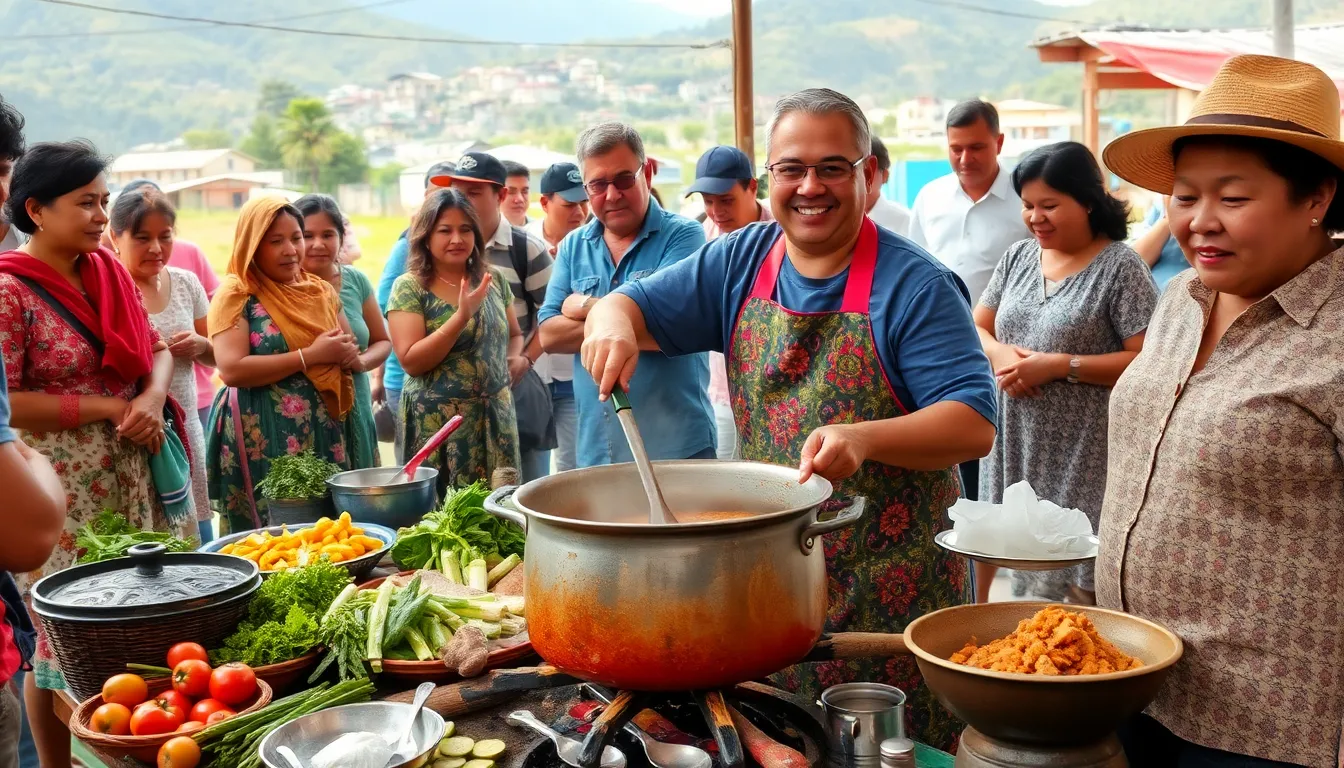In the quirky world of culinary delights, few dishes can rival the charm of pishcaguado. Imagine a plate that’s not just food but a delightful story waiting to be savored. This dish, with its rich flavors and unique preparation, has a way of making even the most serious foodies crack a smile. It’s like the best-kept secret at a dinner party that everyone wishes they had known about sooner.
Table of Contents
ToggleWhat Is Pishcaguado?
Pishcaguado represents a traditional dish cherished in various regions known for incredible flavors. This culinary creation typically features tender meat, often fish, marinated in a combination of spices that enhances its natural taste. Chefs prepare the dish using a unique cooking technique that often includes slow-cooking or stewing.
Fish forms the primary protein in pishcaguado, though some variations may incorporate poultry or other meats. Ingredients like onions, peppers, and a medley of herbs contribute to its distinct aroma and richness. Cultural influences often shape regional interpretations, with each area adding its local ingredients to elevate flavor profiles further.
Serving pishcaguado alongside rice or traditional bread complements its robust flavors. Diners appreciate the combination of textures and tastes, creating a memorable dining experience. Variations in preparation techniques yield diverse experiences, ensuring that every version of pishcaguado has its unique charm.
Culinary experts describe pishcaguado as a true delight for adventurous eaters. Recipes often pass down through generations, keeping traditional cooking methods alive. As the dish continues to gain popularity, it encourages food enthusiasts to explore new interpretations and customizations, providing an exciting challenge for home cooks and professional chefs alike.
Ultimately, pishcaguado not only offers an exquisite taste but also captures the essence of the cultures that celebrate it.
The History of Pishcaguado

Pishcaguado not only showcases culinary artistry but also embodies rich cultural traditions. Its preparation and enjoyment connect people, often serving as a centerpiece during gatherings and celebrations.
Cultural Significance
Cultures celebrate pishcaguado for its communal appeal. Families gather to savor this dish, strengthening bonds through shared culinary experiences. In communities, pishcaguado represents local identity, often prepared during holidays or festive occasions. Chefs emphasize the importance of preserving traditional recipes, linking generations through food customs. The dish reflects the local environment, with regional ingredients influencing its flavor profile. Culinary festivals frequently highlight pishcaguado, showcasing its versatility and adaptation over time.
Historical Origins
Historical records trace pishcaguado to indigenous cooking methods. Ancient civilizations used slow-cooking techniques, creating a rich culinary heritage. Ingredients from local sources played a crucial role in pishcaguado’s evolution. The dish absorbed influences from various cultures through trade and migration, resulting in different regional variations. With each adaptation, pishcaguado retained its core elements while embracing new flavors. It exemplifies the fusion of traditions, remaining relevant in modern gastronomy. Over time, this dish has become a symbol of resilience and creativity in the culinary world.
How Pishcaguado Is Made
Pishcaguado’s making involves carefully selected ingredients and a precise preparation process, contributing to its unique character.
Ingredients Used
Key ingredients in pishcaguado typically include tender meat, often fish, marinated in a blend of spices. Aromatic onions and vibrant peppers add depth to the flavor profile. Fresh herbs enhance the dish’s aromatic qualities, while regional variations introduce local spices. Some iterations feature poultry or other meats for added variety. Rice or traditional bread serves as the perfect accompaniment, completing the meal’s texture and taste.
Preparation Process
The preparation of pishcaguado showcases traditional techniques that elevate its flavors. Chefs begin by marinating the chosen protein in a mix of spices for optimal tenderness. Slow-cooking or stewing follows, allowing the meat to absorb all the rich flavors. As the dish cooks, aromatic vegetables blend perfectly. Chefs often garnish with fresh herbs just before serving, highlighting its colorful presentation. During the cooking, attention to timing ensures each ingredient reaches its peak flavor, creating a delightful experience for every palate.
Variations of Pishcaguado
Pishcaguado showcases an array of delightful variations, each influenced by regional ingredients and cooking customs.
Regional Differences
Every region offers its unique version of pishcaguado, reflecting local tastes and traditions. Coastal areas often feature seafood, infusing flavors from nearby waters like shrimp, octopus, or clams. Inland preparations emphasize heartier meats such as chicken or lamb, often paired with local vegetables. The seasoning varies widely; some regions prefer bold spices while others opt for lighter, herbal notes. Each interpretation retains the core characteristics of the dish, visually and flavorfully translating the culture of its origin.
Modern Twists
Modern twists on pishcaguado expand its appeal to contemporary palates. Chefs experiment with fusion elements, incorporating international spices or techniques like grilling or smoking. Some variations use innovative garnishes such as citrus zest or microgreens, enhancing both visual appeal and flavor complexity. Vegetarian adaptations include plant-based proteins, making the dish accessible to a wider audience. These creative versions retain the spirit of pishcaguado while inviting adventurous diners to explore new tastes and presentations.
Pishcaguado embodies a rich culinary heritage that resonates with food lovers everywhere. Its unique blend of flavors and traditional preparation methods make it a standout dish worthy of exploration. By connecting people through shared meals and celebrations, pishcaguado transcends mere sustenance, becoming a symbol of cultural identity and community.
As chefs and home cooks continue to innovate while respecting its roots, pishcaguado remains a versatile dish that invites creativity. Whether enjoyed in its traditional form or with modern twists, it promises a delightful experience that captivates the senses. Embracing pishcaguado is not just about savoring food; it’s about celebrating a vibrant culinary tradition that continues to evolve.



